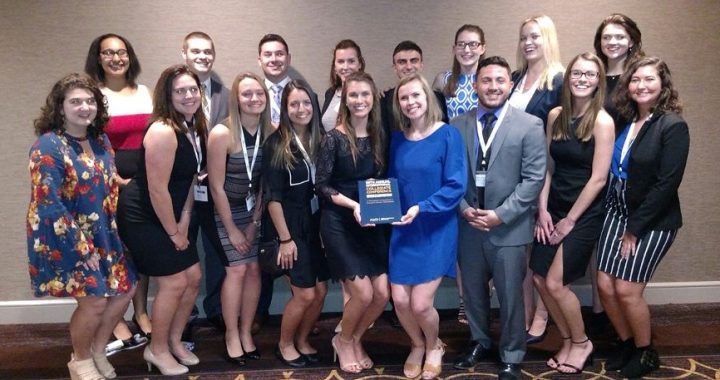As our chapter looks to continue our success and grow in the upcoming years, we sought guidance from schools like Carnegie Mellon University, Rowan University, Texas Southern University, and Northwestern Ohio University, who were all ranked in the Top 5 Small Chapters of AMA in 2016.
Through the panel that these schools put on at the AMA ICC in New Orleans earlier this month, we were able to gain knowledge and insight as to how these schools have reached their level of success. At a small school such as, St. John Fisher College, where marketing majors don’t make up the majority of the student body, we’ve struggled with attendance and participation at events.
We have taken what we learned at this years AMA ICC and will use this knowledge to improve recruitment and membership next year. Following these guidelines will surely assist us in making next year’s chapter better than ever.
Meetings
The schools that presented stated that general meetings are an essential part of a chapter’s success. It’s here where the entire club comes together for workshops, guest speakers, student panels, and many other useful events for marketing students. It’s important for every member to feel engaged at each meeting, which is why many schools use a membership incentive system similar to our points system that we use to determine who attends the ICC each year.
Additionally, many schools implement a member recognition initiative in which the executive board recognizes a member for their hard work and dedication to the club. Similar to the SJFC AMA’s Marketer of the Month, member recognition is important for retention of members who aren’t on the executive board so they can still feel important to the chapter.
Carnegie Mellon’s member recognition system includes a resumé book in which the resumés of active members are compiled and given to recruiters when they visit the campus as an extra motivator to be involved within the club. Attendance is always taken at general meetings as well as other events and many schools use a rating system to get feedback for meetings and events to gauge how engaging each is.
Community Service and Fundraising
Community service is a great way to increase the success of our chapter and get more SJFC students involved with AMA. With more community service events, we could attract students who are service scholars or in the First Generation program, both of which require a certain number of community service hours per semester.
Volunteering for local organizations is another important aspect and could lead to consulting work for those organizations, which would be a great way to infiltrate the Rochester business community and give our students more real-world experience. Consulting work can contribute to fundraising as well, which is definitely a key aspect of a chapter’s success.
Other ideas for fundraising included partnering with local businesses to have, “Dine and Donate” nights, where a certain percentage of the business’ profits benefit the AMA chapter. Additionally, concession stands were a common and simple way to raise funds for the clubs, whether they be at sporting events or in the lobby of the school of business.
A possible item to sell would be the shirts we designed for the AMA ICC, which provide opportunities for local businesses to sponsor the club and put their company name on the shirts.
Executive Board and Leadership
Every school that spoke at the panel stressed the importance of having a strong executive board as the face and leadership of the chapter.
A key aspect that many chapters emphasized was the friendship among executive board members, which they often strengthened through leadership retreats and meetings over the summer. Many expressed that their executive boards meet more frequently than general meetings, with additional internal communication on several online platforms such as Facebook groups, shared folders in Google drive, and group messages on the GroupMe app.
It was also suggested that the executive board meet with the club advisor on occasion to offer guidance and see how things are going, as well as separate meetings with their respective committees to develop the projects that they’re working on.
Carnegie Mellon suggested having each member of the executive board be the head of a committee responsible for a different aspect of the chapter’s activities. This allows them to allocate the responsibilities that are accompanied by each executive board position.
St. John Fisher’s AMA chapter already performs many of these key activities for success, which is a major reason why we placed in the top 25 chapters of 2017. If we continue to do the things that made us successful in the first place, along with some new ideas that these top small chapters thrive on, there is no doubt that we will continue to grow as a chapter and have even more success in the upcoming years.
